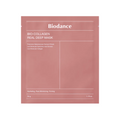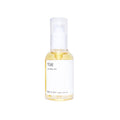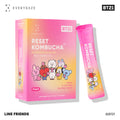SLS, is it an evil ingredient or another victim of “organic scam?”
Intro
I am pretty sure not a lot of people know that Cocamidopropyl betaine’s EWG grade is higher than Sodium lauryl sulfate (SLS) or Sodium laureth sulfate (SLES). The funny thing is Sodium Lauryl Sulfate is considered safe (EWG 1-2 green) AND BACKED UP by more than a fair amount of studies. People have been constantly exposed to the idea “SLS=toxic,” allegedly released by so-called “Organic cosmetic brands” and the companies providing raw materials for them. Some news media and fashion magazines contributed this fear against SLS. As a result, Sulfate based Surfactants are almost eradicated from foaming cleansers or other washable skincare products. So, we can see more other derivatives such as Ammonium lauryl sulfate or Disodium laureth sulfosuccinate.

A little History
The first scholar who questioned the safety of SLS was Dr. Keith Green at the Department of Ophthalmology, Medical College of Georgia in 1989. He published an article on the possible toxicity of SLS on lens and eyes, with relatively high concentration of SLS. A personal care providing company called Newway INC arbitrarily modified and quoted this research, and using it against SLS and SLES for selling their products containing other types of Surfactants. In response to the media attention generated by a company promoting the Anti-SLS campaign at the time, (Bondi. C) Dr. Green stated that the company had misquoted the result and made the wrongful claim that were not supported by his findings during the interview with the famous cosmetic guru, Paula Begoun. However, once people begin to believe something as toxic ingredient, it is hard to correct the misleading info. Some “natural and organic” brands constantly reproduce the deceptive claims on SLS to sell their products, mainly made with even more harmful, irritating or under-researched ingredients.
What is Surfactant?
To assess the safety, we first have to know what the surfactant is. Surfactants are used to decrease the surface tension of the molecule. In skincare products, they are mainly used for making stable mixture between hydrophilic (water-loving) and hydrophobic (water-hating) molecules in cream or serum or as a foaming agent in cleansing products. SLS is under the Anionic surfactants. Generally, the Surfactants in this group are negatively charged on their polar head and most of them
are based in Carboxylic acids, Sulfates or Phosphoric acid derivatives. If you still remember your high school Chemistry class, when you want to stabilize some molecules with negative charge, you have to add “metal” ion, which is normally positively charged or other positively charged molecule. So, if you use Sodium to stabilize them, They become SLS (Sodium lauryl sultate) and if you use Ammonium ion, it will become ALS (ammonium lauryl sulfate.) So, if you put them under water, they are ionized, and they can act as Surfactants. In general, the Anionic surfactants are used as foaming agents and they are generally quite useful for cleansing products. Since they are easily ionized in water, it quickly cleanses out oily and water impurities and emulsifies them with water. However, skin irritation issue still remains, since Surfactants does not discriminate the oily impurities and your skin cell’s Lipid membrane. In other words, it washes away some of your skin cells as well. So, SLS may irritate your skin, but so does other commonly used Surfactants.
Cancer Issue?
Okay, what about the cancer issue? The SLS exposure does not directly induce caner. Generally (not 100%) if some molecule is a Carcinogen, they should have the ability to directly communicate with DNA mechanism. To do this, the molecule should contain reactive molecules in the chain or placed in a relatively unstable ring structure. Sometimes Benzene ring structure in several molecule is thought to be associated with the Carcinogenicity. Long chain carbons are generally not in the Carcinogen category (Such as ALS, SLS and SLES.) Then why were SLS and SLES associated with cancer from the first place? Because of the contamination issue. SLES, especially may undergo Ethoxylation and generate 1,4 dioxane (p-dioxane.) 1,4 dioxane is under the category of “reasonably anticipated to be a human carcinogen.” However, many researchers suggest the skin absorption of 1,4 dioxane is very low, and we do not use the product with 100% SLS, the incidents will be even lower. Further, 1,4 dioxane is not a green colored, scary looking vapor that you can expect from Mutant ninja turtle. It exists in the herbs, coffee and pepper from 2 to 15 ppm and this concentration is common concentration of 1,4 dioxane in SLS or SLES related products.
Last thought

Neither SLS or SLES is a cancer inducing agent. Though they may irritate the skin, they are quite common in any conventional foaming Surfactants. So, you do not have to throw away your Bath and Body Cleanser. Well, it probably wouldn't matter anymore, since SLS and SLES are practically eradicated from the Korean beauty market; So no one would benefit from defending the SLS or SLES, including Masksheets.com or even any of our competitors. I just wanted to tell you this; Please do not blindly believe what “organic scammers” say. Many of these companies claim that they used “olive-based” or “coconut-based” Surfactants, and charge crazy amount of price. But you have to know, coconut-based Surfactant cocamidopropyl betaine has EWG grade 4, Olive oil-based PEGs have EWG grade 3 and bean-based lecithin is EWG grade 3 because of the allergy and irritation issues. In the safety standpoint, they are not better than SLS or SLES in any possible way. On the other hand, any Lauryl or laureth sulfate derivatives can be irritating for some skin type. So, please try them out before you purchase any cleansing products, especially if you have sensitive skin.
References
Begoun P. The Complete Beauty Bible: The Ultimate Guide to Smart Beauty. Rodale, Inc; Emmaus, Pennsylvania: 2004
Bondi, C. A., Marks, J. L., Wroblewski, L. B., Raatikainen, H. S., Lenox, S. R., & Gebhardt, K. E. (2015). Human and Environmental Toxicity of Sodium Lauryl Sulfate (SLS): Evidence for Safe Use in Household Cleaning Products. Environmental Health Insights, 9, 27–32. http://doi.org/10.4137/EHI.S31765
Cosmetic Ingredient Review (CIR) Final report on the safety assessment of sodium lauryl sulfate and ammonium lauryl sulfate. Int J Toxicol. 1983;2(7):127–81.
De Jongh CM, Verberk MM, Spiekstra SW, Gibbs S, Kezic S. Cytokines at different stratum corneum levels in normal and sodium lauryl sulphate-irritated skin. Skin Res Technol. 2007;13(4):390–8.
European Union Reference Laboratory for Alternatives to Animal Testing (EURL ECVAM) Aquatic Toxicity. [Accessed August 15, 2015]
Madsen T, Boyd HB, Nylén D, Pedersen AR, Petersen GI, Simonsen F. Environmental and Health Assessment of Substances in Household Detergents and Cosmetic Detergent Products. Miljøprojekt: Danish Environmental Protection Agency; 2001. In Environmental Project No 615.
Piret J, LaForest G, Bussières M, Bergeron MG. Subchronic (26- and 52-week) toxicity and irritation studies of a novel microbicidal gel formulation containing sodium lauryl sulfate in animal models. J Appl Toxicol. 2008;28(2):164–74
Product Bulletin: Sodium Lauryl Sulfate. Stephan Company; Northfield, Illinois: 2012.
Rastogi SC. Headspace analysis of 1,4-dioxane in products containing polyethoxylated surfactants by GC- MS. Chromatographia. 1990;29:441–5.












